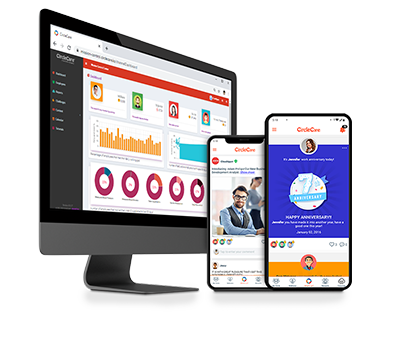6 Best Practices to Boost Efficiency in Emergency Room Teams
Efficiency in emergency room operations is crucial not only for the quality of patient care but also for the well-being of the medical team handling critical situations. Effective emergency room teams can significantly reduce wait times and improve patient outcomes through well-structured strategies. Each member of the team plays a pivotal role in this dynamic environment where every second counts. To achieve optimal efficiency, emergency rooms must continually assess and evolve their practices, adapting to new challenges and technologies. Let’s explore some best practices that can boost efficiency in emergency room teams.
Comprehensive Staff Education and Training
The foundation of a proficient emergency room team lies in its education and training. Beyond initial certifications, ongoing training sessions are essential. These sessions not only refresh skills but also introduce the latest medical protocols and innovative treatment methods.
Paramedics play a vital role in emergency medical services, as they are often the first healthcare professionals to respond to emergency calls. They provide advanced life support to the sick and injured at the scene and during transport to medical facilities, ensuring patients receive critical care before arriving at the hospital. One of the keys to success in emergency care is the initial contact at the scene of the emergency, where quick thinking and prompt medical intervention can significantly impact patient outcomes. This makes the quality of a paramedic training, which exposes students to hands-on clinical experience and real-world scenarios, critical to patient care.

Corporate Wellness App
CircleCare
In addition, targeted education initiatives such as leadership training for senior staff and specialized courses for medical technicians can further enhance the team’s capability. Continuous professional development through simulations and interdisciplinary drills enhances the team’s response time and accuracy in real-life scenarios.
Optimizing Team Communication
Effective communication is the lifeline of emergency medical services. Miscommunications can lead to errors and delays, which are unacceptable in a high-stakes environment like an emergency room. Teams must implement robust communication protocols that are clear and direct. Techniques such as SBAR (Situation-Background-Assessment-Recommendation) provide a standardized framework for interactions, ensuring that critical information is conveyed efficiently and accurately. Periodic review and updating of communication protocols ensure they remain effective and incorporate feedback from team members. Furthermore, the adoption of digital tools for communication, such as mobile handoff applications, helps maintain the continuity of care during shifts and patient transfers.
Improving Patient Flow Management
Effectively managing patient traffic is essential to avoid congestion in the emergency room. Streamlined admission procedures reduce initial delays and sort patients according to the severity of their conditions. A well-implemented triage system guarantees that patients in critical condition are treated immediately, potentially saving lives. Ongoing training in triage techniques ensures all staff members are skilled and uniform in their evaluations. Moreover, leveraging data analytics to predict busy periods helps in making informed staffing decisions, which keeps the emergency room well-equipped for patient surges, thereby curtailing overall wait times and reducing stress among team members.
Enhancing Interdepartmental Collaboration
Efficient cooperation between the emergency room and other hospital departments markedly improves patient care and expedites operations. Emergency room personnel need to maintain robust connections with laboratory technicians, radiologists, and specialists to hasten diagnostics and treatment. Offering regular cross-training sessions helps staff gain insights into the challenges and procedures of different departments, promoting a more collaborative atmosphere.
Creating joint task forces on common issues such as patient flow and resource allocation can lead to more integrated solutions. Shared goals and performance metrics further align the entire hospital towards common objectives, improving overall patient care efficiency.
Incorporating Technology and Innovations
Technology plays a transformative role in modern emergency medicine.
Incorporating state-of-the-art diagnostic tools, including mobile X-ray units and immediate testing kits, into emergency rooms markedly accelerates the diagnostic phase. Further enhancements in treatment precision and error reduction are achievable through AI-powered diagnostic applications. Additionally, the thorough implementation of electronic health records (EHR) improves the management and distribution of information across departments. Telemedicine serves to evaluate and prepare for upcoming cases, ensuring that the medical team is well-prepared and informed before a patient arrives at the facility.
Addressing Staff Wellness and Burnout
The intense demands of emergency room operations often cause significant stress and employee burnout. Monitoring workloads to guarantee that every team member has sufficient rest and support is crucial for their physical and mental well-being. The creation of a peer support system offers a reliable network for staff confronting demanding circumstances. Measures such as regular wellness workshops, access to mental health services, and ergonomic adjustments can help reduce burnout risks. By focusing on staff health and safety, hospitals ensure a motivated, productive, and proficient team.
Conclusion
Boosting the efficiency of emergency room teams requires a comprehensive strategy that includes training, communication, management of workflows, collaborative efforts, technological integration, and wellness initiatives. The adoption of these methods not only elevates patient care but also fosters a more viable and enjoyable work atmosphere for healthcare professionals. As we progress in managing the intricacies of emergency medical services, our ongoing commitment to relentless enhancement and adaptation in these domains is crucial. This approach does not just save lives; it also enhances the professional lives of those committed to this crucial sector.




